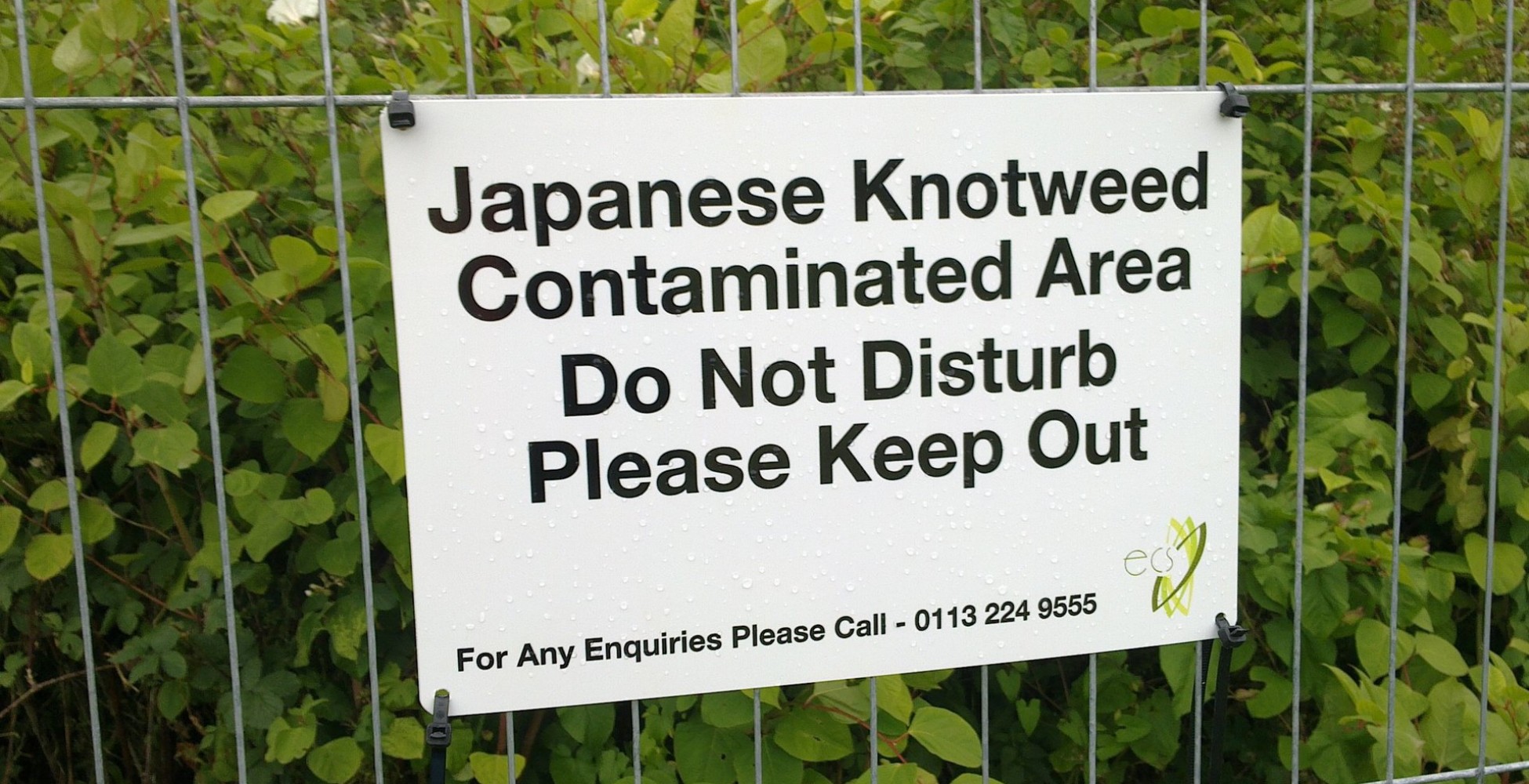Written by Dr Lynne Pettinger
Knotweed, or Japanese knotweed, is known also as Fallopia Japonica, donkey rhubarb, and itadori. In East Asia, knotweed is a fairly ordinary plant. It is sometimes considered a foodstuff, and is home-grown and home eaten. The flora and fauna of this habitat keep it under control. In Western Europe, it is classified as a dangerous weed, able to sprout new life from a small part of the stem, and to crowd out other plants. “Although rather attractive, Japanese knotweed is a real thug as it spreads rapidly”, says the Royal Horticultural Society.
Hmm, all a bit obscure, you might think. How can knotweed be interesting for a story of everyday economic life? I suggest to you that looking at Japanese knotweed can tell us a lot about the ways ‘nature’ gains economic value and about how markets are formed, not given, including through the actions of nature and of experts.
From ‘capital plant’ to ‘alien species’
 Dutch doctor and amateur horticulturalist, Phillipe von Siebold, brought knotweed to Europe. Part of the history of European colonial exploration is the movement of plants and animals into new habitats. Alfred Crosby calls this ecological imperialism and shows how destructive this was: from new diseases that destroyed local populations to the destruction of diverse plant life to make way for European-style farming practices, colonialism changed the shape of the environment as well as the politics, economics and social structures of colonised places. Japanese Knotweed’s first appearance as part of the economic system in Europe was as a desirably exotic plant. It won a gold medal at the society of Agriculture and Horticulture at Utrecht, 1847, and was considered “a capital plant for a small town garden”, according to early adopter and ‘hardy plant club’ owner, John Woods of Yorkshire, England. It became a popular and fashionable addition to gardens, recommended by Gertrude Jekyll, a famous garden designer of the late 19th Century and taste-maker in the arts and crafts movement.
Dutch doctor and amateur horticulturalist, Phillipe von Siebold, brought knotweed to Europe. Part of the history of European colonial exploration is the movement of plants and animals into new habitats. Alfred Crosby calls this ecological imperialism and shows how destructive this was: from new diseases that destroyed local populations to the destruction of diverse plant life to make way for European-style farming practices, colonialism changed the shape of the environment as well as the politics, economics and social structures of colonised places. Japanese Knotweed’s first appearance as part of the economic system in Europe was as a desirably exotic plant. It won a gold medal at the society of Agriculture and Horticulture at Utrecht, 1847, and was considered “a capital plant for a small town garden”, according to early adopter and ‘hardy plant club’ owner, John Woods of Yorkshire, England. It became a popular and fashionable addition to gardens, recommended by Gertrude Jekyll, a famous garden designer of the late 19th Century and taste-maker in the arts and crafts movement.
Japanese knotweed is now a significant plant-based threat to biodiversity in the UK and has been proscribed since the Wildlife and Countryside Act, 1981. These days its invasive rhizomatic root system gives it the kind of voraciousness that human society fears in an apparently non-sentient being. Japanese knotweed is an enemy. Destroying the enemy requires concerted efforts over years of attack by herbicide, by digging and by cutting, followed by careful disposal and perhaps burning.

A market opportunity
There’s a saying in Yorkshire, ‘where’s there’s muck, there’s brass’. This means that where there is mess to clear up, there is money to be made. This is certainly true for knotweed. There is a large, growing market in knotweed treatment aimed at private residents, developers, commercial landowners and local authorities. A range of organisations, from the public and private sector, offer their advice and services. You can’t get a mortgage without a knotweed survey, and you wouldn’t want to build a warehouse on a brownfield site where it might grow through your floor.

Knotweed has therefore had a variable relationship to British society and explaining these changes is difficult. The semiotic movement from desirable plant to dangerous pest is not merely a cultural shift. Knotweed’s materiality – its actual living form – and its impact on other natural elements makes that clear. But equally, neither is it simply a shift in ‘nature’ that human actors are responding to. The evident influence of both colonial histories and horticultural fashions make that reading impossible. And finally, neither is it due to a calculated shift in business strategy, first making money by encouraging the expansion of knotweed then later seeking to eradicate it. The knotweed has visibly pushed its way in. In short, there have been complex and very real transformations in the composition of the hybrids of nature/culture that incorporate knotweed. Knotweed, like other flora and fauna, is literally entangled in the operations of contemporary capitalism.
Amongst those selling knotweed treatments are PlantEco (a pseudonym), established for 10 years at the time I interviewed one of the owners, John, as part of my study of ‘green-collar’ work to understand the ethical conundrums faced by those with strong ecological commitments who were working in the private sector. John is not one of those pre-formatted economic actors familiar from economics textbooks, though in my interview, he did say how he sought to capitalise on the actions of knotweed to build a business:
“erm oh hang on, there’s a business opportunity here”
But he is reliant on its antagonistic presence, including on the feelings of fear it generates. There is no obvious solution to the knotweed problem, but there is space for a claim to expertise. John found that when…
“information on knotweed coming from the bottom up from contractors that weren’t academically very qualified, that were digging holes, not doing a good job and asking for a lot of money just chucking stuff into landfill basically”
…so then a trained, PhD-holding consultant like John can step in. PlantEco had recently had a business coach when I spoke to them, and had learned the language of contemporary capitalism. Knotweed was now their ‘USP’ (Unique Selling Point).
Expertise and market performance
John has been involved in writing guidance for knotweed surveyors. This work drew on John’s established credentials as a knotweed expert, and it certainly aids PlantEco’s position in the market for knotweed solutions. Expertise is interwoven with John’s orientation to market activity as well as with his capability to do the work. This resonates with the scholarship of Michel Callon and Actor Network Theory.
For Callon expert discourses are performative in the making of markets. In other words, markets for things like plant removal rely on the constant reassurance of consumers in the effectiveness of what they are buying. Expertise involves tacit and explicit knowledge, and capability in doing as well as capability in talking about doing (walking the talk, but also talking the talk too).
Clients are remarkable for their lack of expertise about, or even knowledge of, knotweed and its allied agents. Such ignorance generates business for the knotweed experts. However, if you have a silver lining, then there’s also a cloud, and non-experts – ordinary house buyers – can cause problems for John’s company as some customers persist in misunderstanding the rules of his game and insist on talking to him personally:
“in order for us to make money we’ve had to productise this system by making it cheap, making it simple, making it formed, making it a process erm so that we can stack it high and sell it cheap”
PlantEco’s solution is rationalisation on the supermarket model. Rationalised, codified expertise takes the form of guidance documents that can be sold: a new route to market, is what the business coach calls it.

Expertise is not simple though. It is often contested. When John negotiates between a property developer client, the local authority who grant planning permission, and environmental campaigners, he struggles to assert his authority. The expertise he needs there is in negotiation and compromise. Recently, his business is also under attack from other scientific experts. They have developed something he calls a “little silly little aphid” to use against knotweed. This innovation also attacks his USP, his solid market position. Knotweed and the markets around it are not stable.
Notice the use of ‘experts’ and the credibility they receive in the video below. With ‘people’ being seen as unaware and ignorant, experts are able to articulate the problem, and propose a solution, but alternatives are in conflict.
From this story of toxic knotweed, you might take some more general points to use when thinking about other phenomena. I’ve talked here about how past political practices affect contemporary life, about how markets are made and remade, and about how claims to expertise are both used to generate economic value and formed through those very market practices.
In what ways are other toxic and non-toxic natural materials related to market exchanges? What different kinds of human and non-human actors are involved? How are they embedded into social and political spheres?
Knotweed Resources
Callon, M. eds. (1998) The Laws of the Markets Oxford: Blackwell
Crosby, A. (1988) Ecological Imperialism: The Biological Expansion of Europe, 900-1900 New York: Cambrige University Press
Hess, D. J. (2014) Good Green Jobs in a Global Economy: Making and Keeping New Industries in the United States Massachusetts: MIT Press
Goffey, A., & Pettinger, L. (2014). Refrains and assemblages: Exploring market negotiations and green subjectivity with Guattari. Subjectivity, 7(4), 385–410
Gregson, N., Crang, M., Botticello, J., Calestani, M., & Krzywoszynska, A. (2014) Doing the “dirty work”of the green economy: Resource recovery and migrant labour in the EU, European Urban and Regional Studies, online publication
Lorimer, J. (2006) What about the nematodes? Taxonomic partialities in the scope of UK biodiversity conservation, Social & Cultural Geography, 7(4), 539–558


